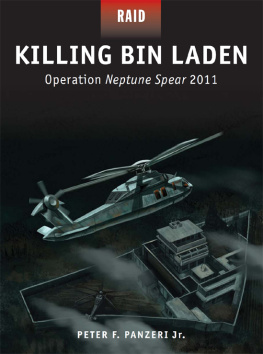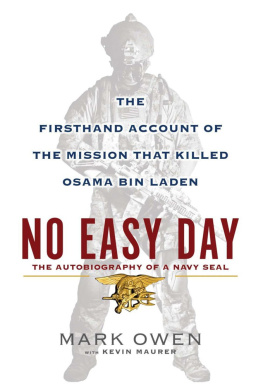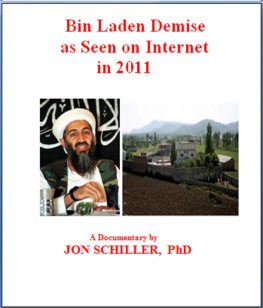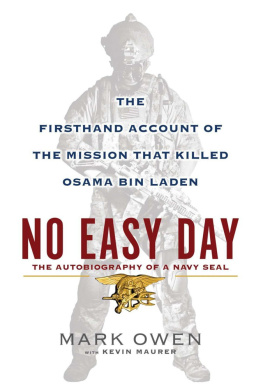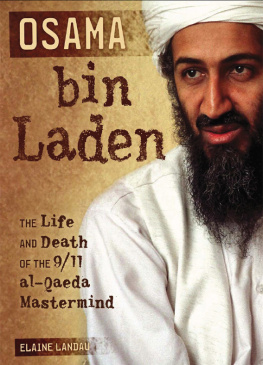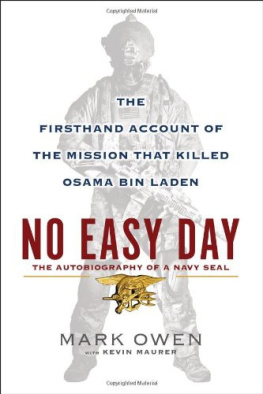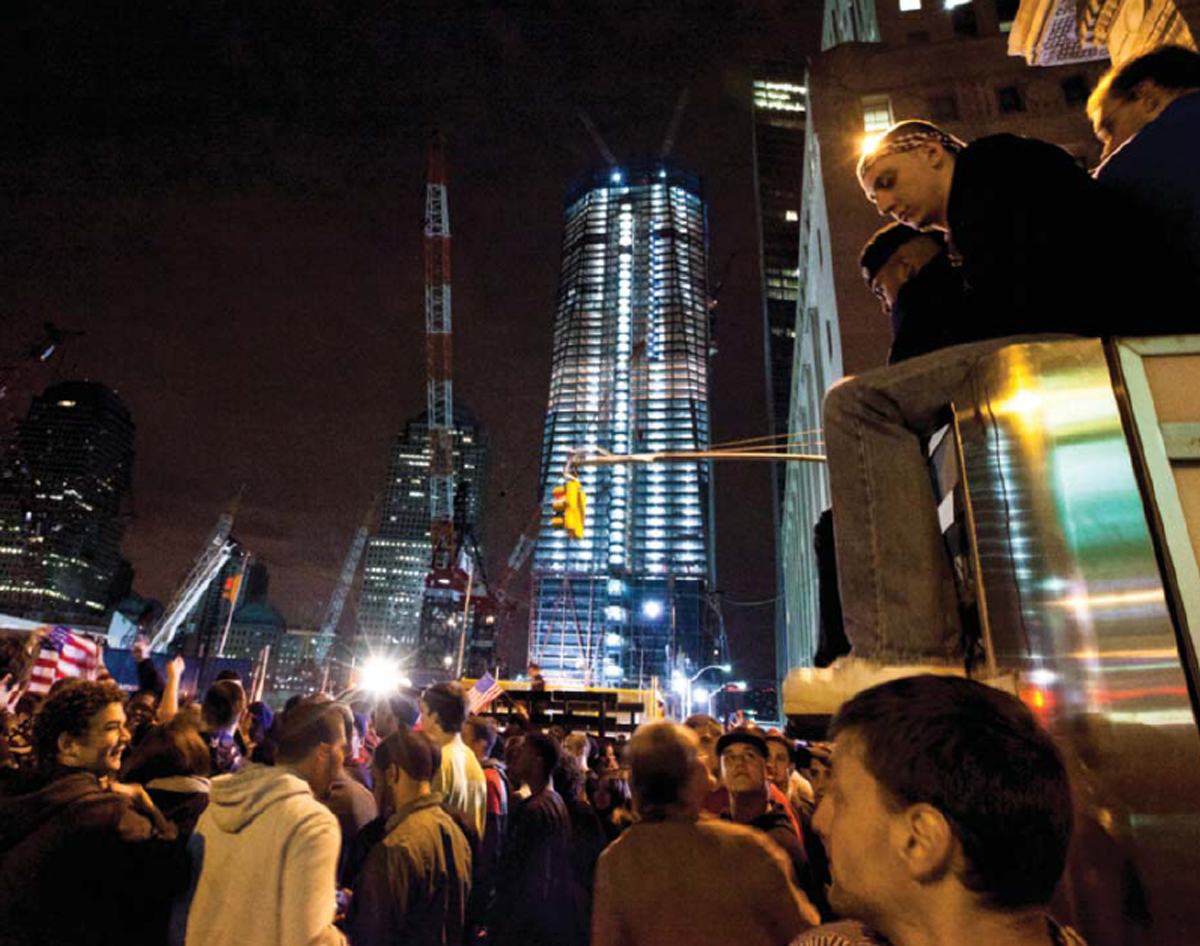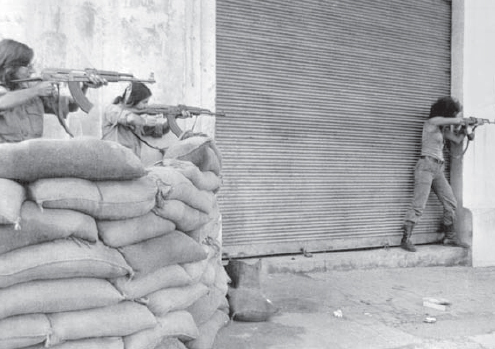KILLING BIN LADEN
Operation Neptune Spear 2011
The day after the raid on bin Ladens compound, the Pakistani military attempt to prevent photos being taken from outside the walls. (Warrick Page/Getty Images)
PETER F. PANZERI Jr.
CONTENTS
INTRODUCTION
On May 2, 2011 the worlds most wanted man, Osama Bin Laden, was shot dead by a US Navy SEAL in Abbottabad, Pakistan. Although Operation Neptune Spear the code name for the mission to kill or capture the Saudi-born militant and one-time leader of al-Qaeda took a mere 38 minutes to carry out, it was over ten years in the making. In execution, it was a simple operation with just 24 men on the ground. However, in its entirety, Neptune Spear was as complex a mission as any can get, drawing on the full national assets of the United States. The result of over a decade of intensive intelligence gathering, analysis and planning, it still demands significant attention worldwide to this day.
Save for the tenacity of a determined few in the intelligence services, Operation Neptune Spear would never have been conceived, and without the meticulous planning and exhaustive preparation of many special operations professionals, it could have never been executed. Moreover, the skills and resourcefulness of a handful of elite aviators, tactical specialists and trained killers prevented the operation from quickly deteriorating into a costly and disastrous failure. Although it was one of the most successful, momentous and dramatic military raids ever attempted, Operation Neptune Spear was clearly not flawless.
The raid was carried out by the men of the Naval Special Warfare Development Group (DEVGRU), more popularly known as SEAL Team Six which was in fact the name of its predecessor unit, disbanded in the 1980s. DEVGRU forms the primary counter-terrorism elements of the US Joint Special Operations Command, along with the US Army Delta Force. For certain missions, as was the case with Neptune Spear, it is placed under operational control of the US Central Intelligence Agency. While all activities and details on DEVGRU are highly classified, enough information has been has been released to provide a clear picture of the men, the machines and the methods of SEAL Team Six.DEVGRU is reportedly divided into six squadrons: Gold, Blue, Silver and Red Squadrons are Assault Teams, Black Squadron is the Reconnaissance & Surveillance Team, and Gray Squadron is a specialist boat squadron dedicated to maritime operations. Their multi-functional special operations missions include high-risk personnel/hostage rescue and extractions, covertly infiltrating international high-risk areas and pre-emptive counter-terrorist raids to recover or eliminate high-value targets.
In 2011, the men of this unit were tasked with the mission to eliminate Osama bin Laden, who had been tracked down to his Abbottabad compound after a decade-long hunt. Bin Laden had become the worlds most infamous terrorist leader in September 2001, when operatives of his al-Qaeda network launched a series of suicide attacks in the United States using hijacked airliners, most devastatingly against the World Trade Center in New York. But Osama bin Ladens career as an Islamic militant stretched back decades. It was a Middle East war that first shaped bin Ladens beliefs, leading to the formation of his al-Qaeda organization and a global terrorist campaign, and ultimately to bin Ladens death in an Abbottabad compound at the hands of a SEAL special operator.
A crowd cheers at the corner of Vesey and Liberty streets next to ground zero, the site of the destroyed World Trade Center, May 2, 2011, after hearing news of Osama Bin Ladens death. (Sgt. Randall Clinton/USMC)
ORIGINS
The making of Osama Bin Laden
Osama bin Mohammed bin Awad bin Laden was born in Riyadh, Saudi Arabia in March 1957. He was the seventeenth of 52 children born to Sheik Mohammed bin Laden, a self-made billionaire and Saudi Arabias wealthiest construction magnate. In September 1967 Sheik Mohammed bin Laden was killed in a plane crash in Saudi Arabia (a fate that his eldest son and primary heir would also share two decades later). All of the bin Laden heirs were multi-millionaires.
Three aspects of note stand out in the development of Bin Laden into the worlds most notorious terrorist leader. Each of these had a profound and clear influence upon him. First, from childhood he was raised as a Wahhabi Muslim (a strict Sunni sect), revering over 1,500 years of fundamentalist Arab-Islamic religion and culture. He grew up to be a religious militant and sought to express his beliefs in the life choices he made. He married women from families claiming descent from the prophet Mohammed. He also played a personal role in his familys construction work during rebuilding at both Medina and Mecca, widely acknowledged as Islams two holiest sites. From a very young age, bin Laden did more than just embrace Islamist culture and religion. He identified himself through it, derived self-importance from it, and sought to protect it. As a Wahhabi, Bin Laden fixated on Islams founders and the precepts of the Muslim conquest, which called for a jihad (or holy war) to prevail over the enemies of Islam. As an affluent and influential member of the privileged class and (later) an essentially self-appointed holy leader, he would later redefine and redirect such historical aspects of Islam to meet the needs of what he viewed as his own calling. Moreover, his charismatic leadership would inspire many thousands of others to join this militant and fanatical cause.
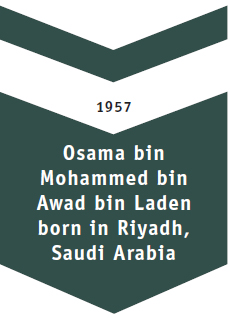
Second, Osama bin Laden developed and clearly harbored exceptionally intense and vengeful hatreds. These appear to have been rooted in losses suffered during crucial coming-of-age periods of his life. As a college student, his family wealth allowed him to frequently escape Saudi Arabias strict Islamic culture and customs, holidaying in lavish family-owned properties with school friends and family in cosmopolitan Beirut in Lebanon. During these periods he developed personal relationships and deep affection for the place and its people. As he matured, bin Laden became involved with some of the religious (and sometimes reactionary) factions in the city, and he invested generously in religious and cultural causes.
Osama bin Laden was deeply affected by the brutal events of the 19751990 Lebanese Civil War. Here, armed teenage girls guard a Phalangist milita barricade in downtown Beirut in 1975. ( Bettmann/Corbis)
Osama bin Ladens sheltered life was brutally interrupted by the time he was 18, with the outbreak of the violent, sectarian Lebanese Civil War in 1975. He felt a great sense of personal loss as the places and people he enjoyed during his adolescence were virtually annihilated before the eyes of the world, and he was powerless to help. He blamed both Israel and the United States for inciting anti-Muslim factions in Lebanon. In his mind he corroborated these views when US and Israeli military interventions followed in Lebanon. Furthermore, when the Sabra and Shatila massacres of several thousand Muslim refugees at the hands of Lebanese Phalangist militia took place in mid-September 1982, bin Laden again blamed the US and Israel. All of these wounds ran exceptionally deep. Over 20 years later, in his most famous video message following the September 2001 terrorist attacks, he still expressed vehement anger at these atrocities in Lebanon. Bin Laden continued to cite this in nearly all of his Al Jazeera broadcast speeches. He stated in 2004: The events that affected my soul in a direct way started in 1982 when America permitted the Israelis to invade Lebanon and the American Sixth Fleet helped them in that. This bombardment began and many were killed and injured and others were terrorized and displaced.

